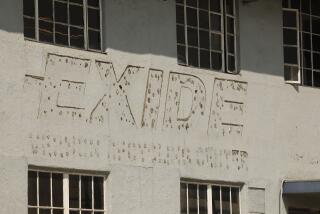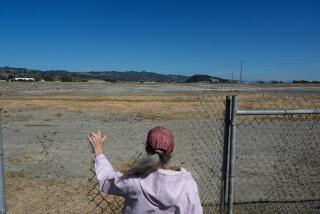Review finds more than 500 problems in plant meant to treat Hanford nuclear waste
The Energy Department has completed an exhaustive technical review of the plant designed to treat waste from the former Hanford nuclear weapons site and ordered the manager of the project to fix more than 500 problems that could compromise its future operation.
The government also told San Francisco-based Bechtel to comply with 10 major recommendations from the study, including some that would require design changes to the partially built plant in central Washington.
William Hamel, the federal project director overseeing the construction of the $12.2-billion cleanup facility, said the Energy Department is trying to identify any potential defects as early as possible and get them addressed before they cause further schedule delays or later problems.
The government is building a small industrial city on a plateau above the Columbia River to transform 56 million gallons of radioactive sludge into solid glass, which theoretically can be stored safely for thousands of years. The process involves a “melter,” which exposes the waste to extremely high temperatures.
The 586-square-mile Hanford site is generally considered the most contaminated place in the country. The sludge, a byproduct of the chemical process used to isolate plutonium, is stored in 177 underground tanks, a third of which have leaked.
But the complex job has been encountering problems for years, most recently when the Energy Department said it would delay full operation of the facility for another 17 years -- until 2039.
See more of our top stories on Facebook >>
A draft of the review last summer identified more than 300 significant design vulnerabilities. The final review cites 519 vulnerabilities, some major but some minor.
The order to Bechtel on Friday involved a melter designed to handle lower-level radioactive materials, which would be solidified and buried at Hanford.
Hamel said the low-activity melter is a safe and well-designed facility, despite the seemingly large number of problems that the technical teams identified. He said that 95% of the vulnerabilities have already been recognized and that many of them are already being addressed.
The review team, which included experts from the Energy Department, Bechtel and outside organizations, found some systemic problems, asserting that they “observed recurring fundamental programmatic design process deficiencies.” Left unresolved, the team warned, the problems could affect how the entire facility operates.
Construction of the melter is 78% complete, so the fixes are coming somewhat late in the project.
A leaked draft version of the report, which the Los Angeles Times reported on last August, found that the plant had 362 significant design vulnerabilities. The larger number in the final report includes a broader range of vulnerabilities, Hamel said.
“Is there anything new that caused me grief? No,” Hamel said.
Among the 10 recommendations was a call for Bechtel to examine the plant’s ventilation system, which could allow contaminated air to leak into areas that are supposed to be isolated from radioactivity. The matter is one that could result in design changes. Another key recommendation requires Bechtel to evaluate whether there could be overheating in the area where molten glass is poured into canisters.
The report also identified an O-ring on a tank, designed to withstand 1,250-degree gases, but which could fail at 250 degrees. Hamel said that the engineering teams are already evaluating the temperatures and that the fix would be relatively easy.
Hamel said that the fixes and implementation of recommendations would not affect the cost of the project and that Bechtel would handle them within the scope of its contract.
The action plan was “mutually agreed upon,” said Bechtel spokeswoman Staci West. “These corrective actions become part of the final set of steps we will take to begin safely treating Hanford’s tank waste.”
The Energy Department has been hoping to get the low-level melter operating as soon as possible, following even deeper technical problems at other parts of the waste treatment plant.
In 2013, then-Energy Secretary Steven Chu stopped most construction on the project when a research chief at the facility found it had flaws that could cause an explosion at a melter for high-level radioactive waste. The construction remains largely suspended, pending a major technical review of that part of the operation.
In an effort to get the cleanup moving again, Chu’s successor, Ernest J. Moniz, ordered that some of the lower-level waste be solidified without any pretreatment and on a faster schedule at the low-level melter.
The Energy Department has been missing a series of legal deadlines that were part of an agreement with Washington state officials.
Twitter: @RVartabedian
ALSO
‘We are not leaving’: The final days of an Oregon occupier
Justified shooting? Residents near Oregon occupation site debate FBI video
1 dead and several injured in stabbing and shooting attack at Denver motorcycle expo
More to Read
Sign up for Essential California
The most important California stories and recommendations in your inbox every morning.
You may occasionally receive promotional content from the Los Angeles Times.











